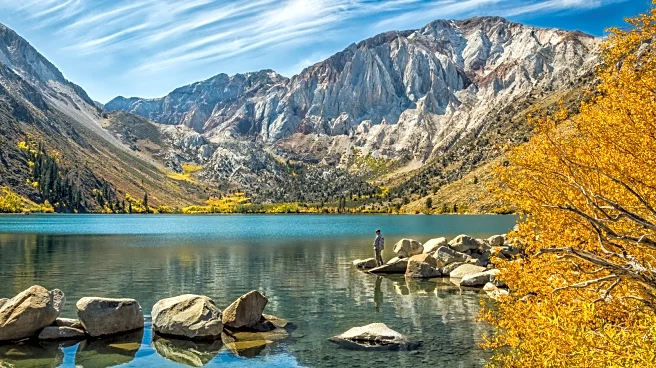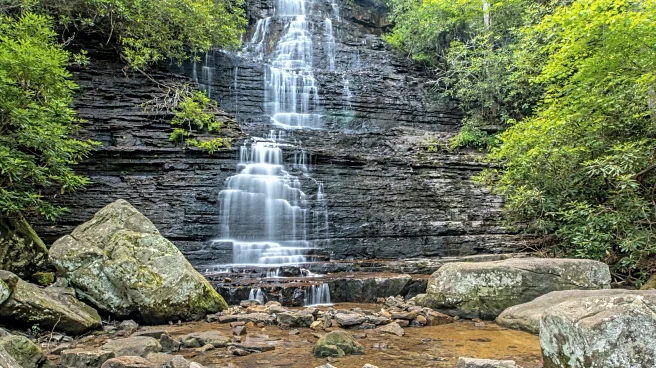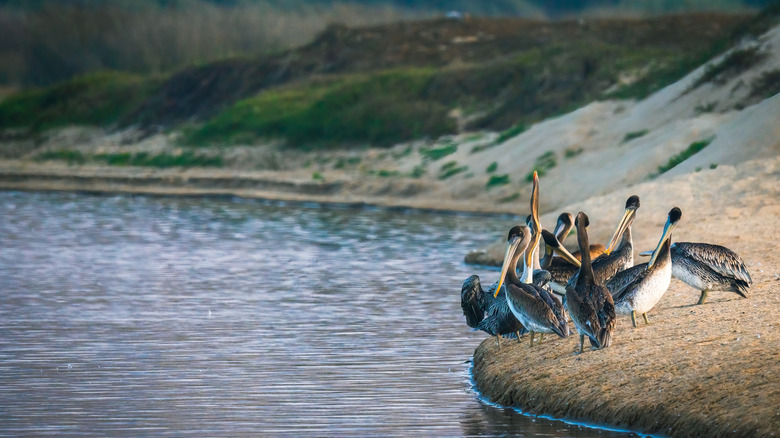
As the third largest state by area in the U.S., California features all kinds of landscapes. You have that good, old-fashioned oceanside scenery in SoCal, towering redwoods piercing the clouds around the Bay Area, granite cliffs and U-shaped valleys in Yosemite, and barren desert badlands in Death Valley. Sand dunes don't usually come up in the conversation — despite the state boasting several of these landforms. The Guadalupe-Nipomo Dunes are some of the most dynamic sights you'll ever witness,
sculpted ever-so-gracefully by wind and time. The 18-mile dune complex takes up 22,000 acres of the Central Coast — 2,553 acres of which is a designated wildlife refuge. Not only does this haven provide shelter for unique wildlife, but it also offers unmatched hikes for adventurers.
While the Imperial Sand Dunes are technically California's largest, Guadalupe-Nipomo is the biggest intact coastal dune ecosystem in the world. Founded in 2000, theGuadalupe-Nipomo Dunes National Wildlife Refuge serves as a sanctuary for numerous rare and endangered species, as well as their habitats. These include active dunes, scrubs, freshwater marshes, riparian woodlands, and more varied terrain. The refuge preserves the endemic plant life, too, such as the threatened La Graciosa thistle, Gambel's watercress, and marsh sandwort. Thanks to the refuge's diversity, it attracts all sorts of animals and birds, making it a top photography destination.
The Guadalupe-Nipomo Dunes National Wildlife Refuge is in close proximity to Santa Barbara — an hour-and-40-minute drive will bring you here. It's a much longer journey from Los Angeles since you'll be on the road for 3.5 hours without any stops. Perhaps the best course of action would be to make Oceano your launching pad. The hidden coastal town off Highway 1 is a great place to indulge in fresh seafood — besides, it's only 30 minutes away from Guadalupe-Nipomo.
Read more: The 5 Best Hidden Hot Spring Hikes In California
Sand Dunes And Coastal Views Dominate Guadalupe-Nipomo
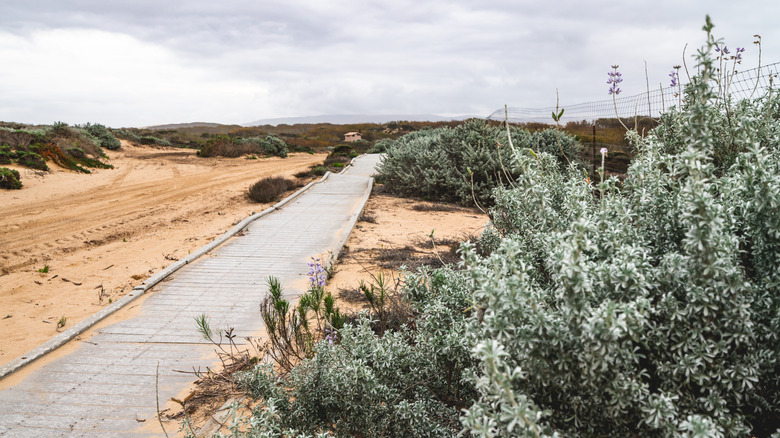
While you're going to need a car to drive to the dune complex, the only way to access the wildlife refuge is on foot. There are two trails you can take to get there, but neither is well maintained — so you'll be scrambling on sand with little to no shade. To avoid the harsh sun, try visiting early in the morning or evening. Ticks are common in the sanctuary, too, so make sure to wear appropriate clothing and keep to the path while exploring.
The first hike to reach the Guadalupe-Nipomo Dunes National Wildlife Refuge is via Oso Lake, which is also located within the complex, situated about 10 minutes north of Guadalupe. Here, you can park your vehicle for a nominal fee, then make your way toward the Oso Flaco Lake Trail, which guides you to the ocean. From there, continue hiking to the boardwalk until you get to Oso Flaco Creek and cross it if the water level is low. Later, head south for 1 mile, with ocean views surrounding you throughout the journey. Soon enough, you'll arrive at the northern part of the wildlife refuge. In total, the hike is roughly 4.5 miles round trip.
The other way to get to the refuge is through the Rancho Guadalupe Dunes Preserve. Follow the road from the entrance gate toward the beach parking, which is just 2 miles away. This route runs alongside the shore, too — from the parking lot, trek for half a mile north, and eventually, you'll spot the Santa Maria River. Once again, check if the water level is safe to cross, then proceed for a 1.5 miles to access the refuge, bringing this path to a total of a 4-mile, out-and-back hike.
You'll Encounter A Variety Of Wildlife At The Refuge
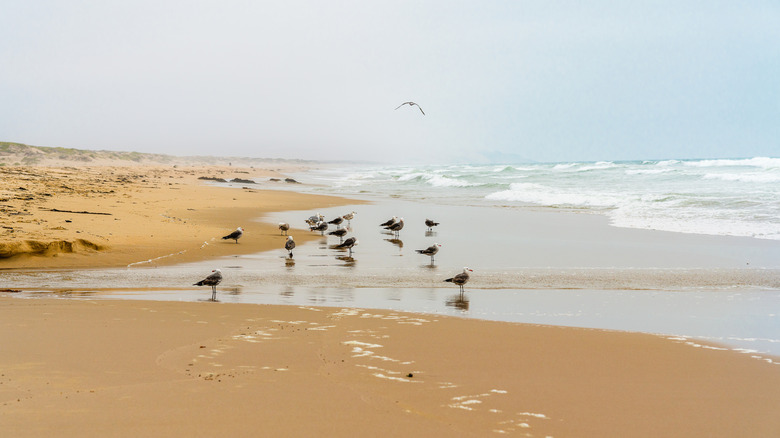
As one of the most pristine habitats in the complex, the refuge creates opportunities for ethical wildlife observation. Approximately 118 animals with a special status have been recorded in the reserve. Birdwatching enthusiasts will be happy to know that they can observe more than 100 species — the endangered Western snowy plover and California least tern call this place their home. However, during the breeding season (March 1st to September 30th), the Western snowy plover's nesting areas are closed to the public to prevent disturbances, with the beach and foredunes being particularly vulnerable.
Other avian species to observe include sora rails, California quails, brown pelicans, and red-tailed hawks. If you're lucky, you might even catch a glimpse of a horned lark or a Brewer's blackbird. When you're not looking through your binoculars, you might spot a California red-legged frog, another threatened species found in Guadalupe-Nipomo. You'll come across multiple artificial ponds dotted within the refuge to promote their population increase. The Pacific chorus frog is another amphibian you'll find hopping around in the wetlands — keep your eyes peeled for western fence lizards and common garter snakes. Surf fishing is also available in the general Guadalupe-Nipomo area, which is reachable through the refuge's beach.
There are strict rules regarding visiting the Guadalupe-Nipomo Dunes National Wildlife Refuge. For starters, you'll have to leave your pets at home when coming here. Camping on the refuge's grounds is not allowed. If you really want to stay the night, opt for Oceano Campground, located 30 minutes away at Pismo State Beach. When you still crave the wind-carved dunes of California, head to Kelso Dunes Wilderness deep in the desert to enjoy solitude and singing sands.
Ready to discover more hidden gems and expert travel tips? Subscribe to our free newsletter for access to the world's best-kept travel secrets.
Read the original article on Islands.


